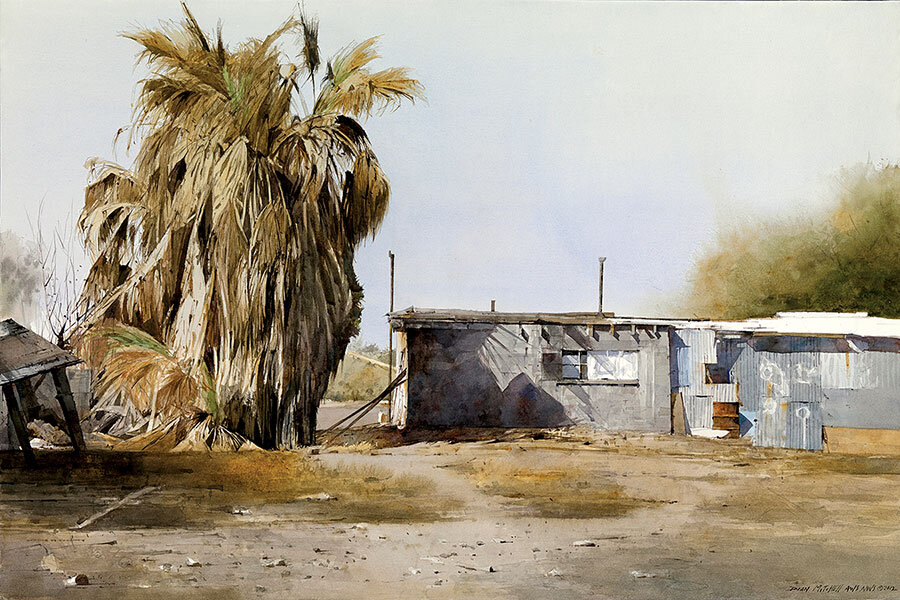Finding new views of the iconic American West
Loading...
When Florida-based painter Dean Mitchell visits the West, he doesn’t focus on the grand, romantic views that have been captured by the brushes of so many others. Mr. Mitchell’s watercolors and oils are of ramshackle reservation sites in Arizona that remind him of his impoverished childhood in the South, and that spark conversations about how history and inequality shape today’s America.
“I just want the work to ring true,” says Mitchell, who is among the artists offering a vision of the West as a place with modern concerns and contemporary vistas.
He has a show of reservation scenes opening in March at the Marianna Kistler Beach Museum of Art in Manhattan, Kan. Last year, the Whitney Western Art Museum in Cody, Wyo., added a Mitchell painting to its collection. Curator Emily Wilson says Mitchell’s perspective is unique. “It’s good that artists want to show more of the West,” she adds.
A newcomer working in this vein is Jo LeMay Rutledge, a Texan who did not at first think she could contribute to a crowded genre.
“I wasn’t about to paint another proud Indian princess,” she says. “I go out there and that’s not what I see. I see cowboys on cellphones.”
Ms. Rutledge says she paints the West today, just as Frederic Remington and Charles M. Russell painted the West of their time. Their 19th-century vision still wields powerful influence over how the West is imagined.
Colorado artist William Matthews has, he says, developed an audience that likes “seeing something unusual and not predictable.” His light-filled watercolors have cows and horses, but also trucks and gas canisters. In one portrait, a cowboy friend, who was trying to kick the habit, sucks on a lollipop instead of a cigarette.
“The West is still a subject that’s fruitful for artists to explore,” says Thomas Brent Smith, who recently put together a Matthews show for the Denver Art Museum.







